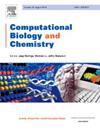E-pharmacophore based virtual screening of potent lead molecules against Cystic Fibrosis: An in silico study
IF 3.1
4区 生物学
Q2 BIOLOGY
引用次数: 0
Abstract
Cystic fibrosis is an autosomal recessive condition caused by mutations in the CFTR gene, which encodes the CFTR protein. Currently, CF is a life-limiting illness that has a limited cure. The present study aimed to identify top leads against CFTR protein with F508del in comparison with Lumacaftor. In this study, a homology model of the NBD domain of CFTR protein was developed using the available NBD domain crystal structure. The protein model was refined through apo dynamics. Energy-optimized pharmacophore mapping was carried out to identify essential features for CFTR, resulting in a model with a hydrogen-bond donor, two hydrogen-bond acceptors, and three aromatic ring sites. A screening of a compound from the NPASS database using these DAARRR six-point-pharmacophore features led to the identification of potential ligands that could act against CFTR protein. Further studies such as ADME/T, molecular dynamics, MM_GBSA, and DFT were performed to identify the top-hit compound from the NPASS database. The compound Anguibactin (NPC41982) has been identified as a top lead that exhibits higher binding affinity and stability than the reference compound Lumacaftor, suggesting their potential to bind to the active site of the CFTR protein. These compounds could serve as starting points for the development of drug-like molecules for treating cystic fibrosis.
基于 E-pharmacophore 的囊性纤维化强效先导分子虚拟筛选:硅学研究
囊性纤维化是一种常染色体隐性遗传病,由编码 CFTR 蛋白的 CFTR 基因突变引起。目前,CF 是一种限制生命的疾病,治愈率有限。本研究旨在与 Lumacaftor 相比,找出针对 CFTR 蛋白 F508del 的顶级药物。本研究利用现有的 NBD 结构域晶体结构,建立了 CFTR 蛋白 NBD 结构域的同源模型。通过apo动力学对该蛋白质模型进行了完善。为了确定 CFTR 的基本特征,研究人员进行了能量优化药性图谱绘制,最终建立了一个具有一个氢键供体、两个氢键受体和三个芳香环位点的模型。利用这些 DAARRR 六点药效位点特征对 NPASS 数据库中的一种化合物进行筛选,最终确定了可对 CFTR 蛋白起作用的潜在配体。通过 ADME/T、分子动力学、MM_GBSA 和 DFT 等进一步研究,从 NPASS 数据库中确定了最热门的化合物。与参考化合物 Lumacaftor 相比,化合物 Anguibactin(NPC41982)表现出更高的结合亲和力和稳定性,这表明它们具有与 CFTR 蛋白活性位点结合的潜力。这些化合物可以作为开发治疗囊性纤维化的类药物分子的起点。
本文章由计算机程序翻译,如有差异,请以英文原文为准。
求助全文
约1分钟内获得全文
求助全文
来源期刊

Computational Biology and Chemistry
生物-计算机:跨学科应用
CiteScore
6.10
自引率
3.20%
发文量
142
审稿时长
24 days
期刊介绍:
Computational Biology and Chemistry publishes original research papers and review articles in all areas of computational life sciences. High quality research contributions with a major computational component in the areas of nucleic acid and protein sequence research, molecular evolution, molecular genetics (functional genomics and proteomics), theory and practice of either biology-specific or chemical-biology-specific modeling, and structural biology of nucleic acids and proteins are particularly welcome. Exceptionally high quality research work in bioinformatics, systems biology, ecology, computational pharmacology, metabolism, biomedical engineering, epidemiology, and statistical genetics will also be considered.
Given their inherent uncertainty, protein modeling and molecular docking studies should be thoroughly validated. In the absence of experimental results for validation, the use of molecular dynamics simulations along with detailed free energy calculations, for example, should be used as complementary techniques to support the major conclusions. Submissions of premature modeling exercises without additional biological insights will not be considered.
Review articles will generally be commissioned by the editors and should not be submitted to the journal without explicit invitation. However prospective authors are welcome to send a brief (one to three pages) synopsis, which will be evaluated by the editors.
 求助内容:
求助内容: 应助结果提醒方式:
应助结果提醒方式:


